The Great Pyramid of Giza, built over 4,500 years ago by Pharaoh Khufu, is a remarkable feat of ancient Egyptian engineering and architecture. Originally the tallest man-made structure, it was constructed from 2.3 million limestone blocks by around 100,000 skilled workers using ramps, sledges, and precise astronomical alignment. Inside are three main chambers, mysterious air shafts, and an unfinished subterranean chamber. Modern discoveries include a large void above the Grand Gallery and a claimed vast underground complex beneath the pyramids, challenging traditional views. As the only surviving original Seven Wonder, its legacy spans ancient historians, Islamic scholars, and modern archaeology, blending art, science, and spirituality to inspire ongoing global fascination.
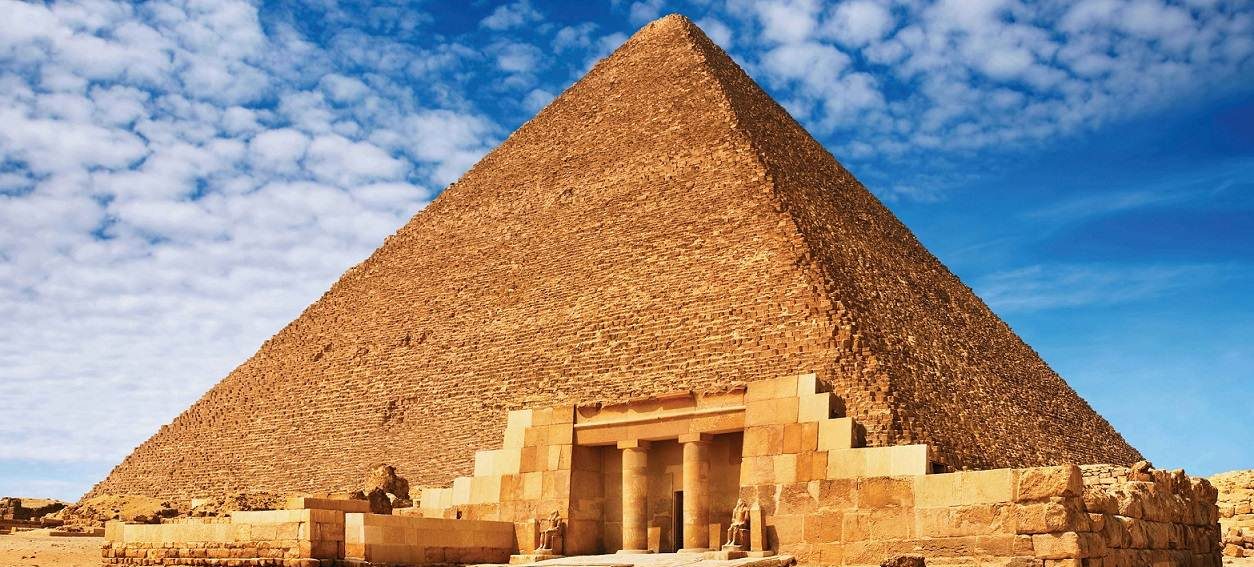
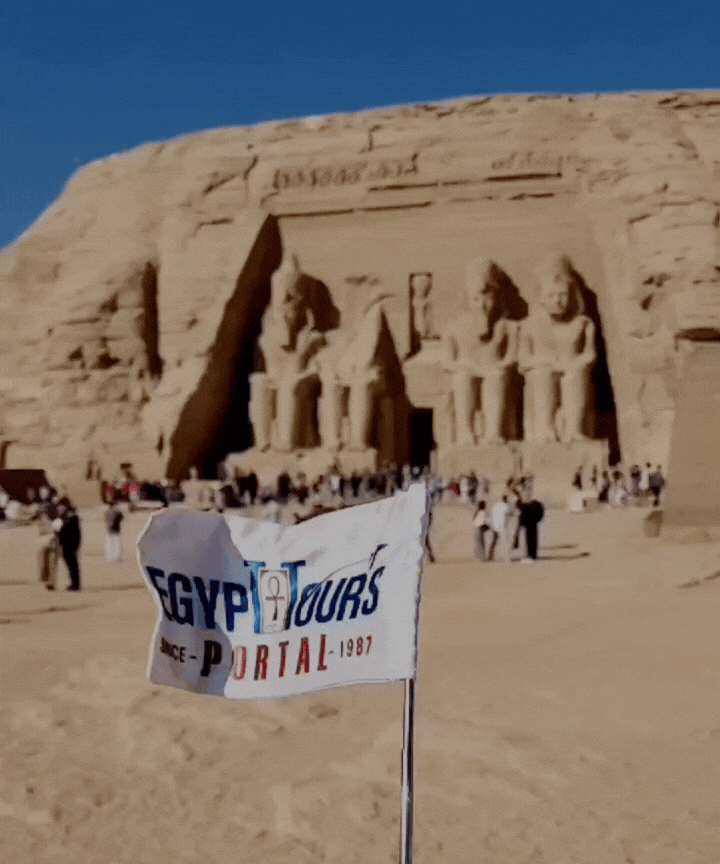
The Great Pyramid of Giza is one of the heavenly constructions that can truly exhibit the brilliance and dedication of the Human Race and transcends the common understanding of art & science to a whole new level of comprehension. The main purpose of this article is to offer every traveler and scholar all the information and details about the Pyramid of Khufu, a.k.a the Pyramid of Cheops. This article was written by a group of a very knowledgeable team of Egyptologists, tour guides, and tour operators who know everything great about the legendary pyramid of Giza.
When men began to take control of their destiny, a great monument was created to stand as living evidence of the power and intelligence of the ancient Egyptians. Many structures around the world truly exhibit the brilliance and dedication of the Human Race, but there is one monument that transcends art & science to new heights: “The Great Pyramid of Giza”.
The pyramids were a true representation of the social structure of the ancient Egyptian community and contained importance when it came to ancient Egyptian religion as the pyramid was a replica of the primeval mound where the universe was created by the hands of one of the most powerful ancient Egyptian gods, who is the creator God, Amun. The pyramid of Giza is a true mystery that is able to capture the minds of everyone from tourists to archaeologists and even scientists.
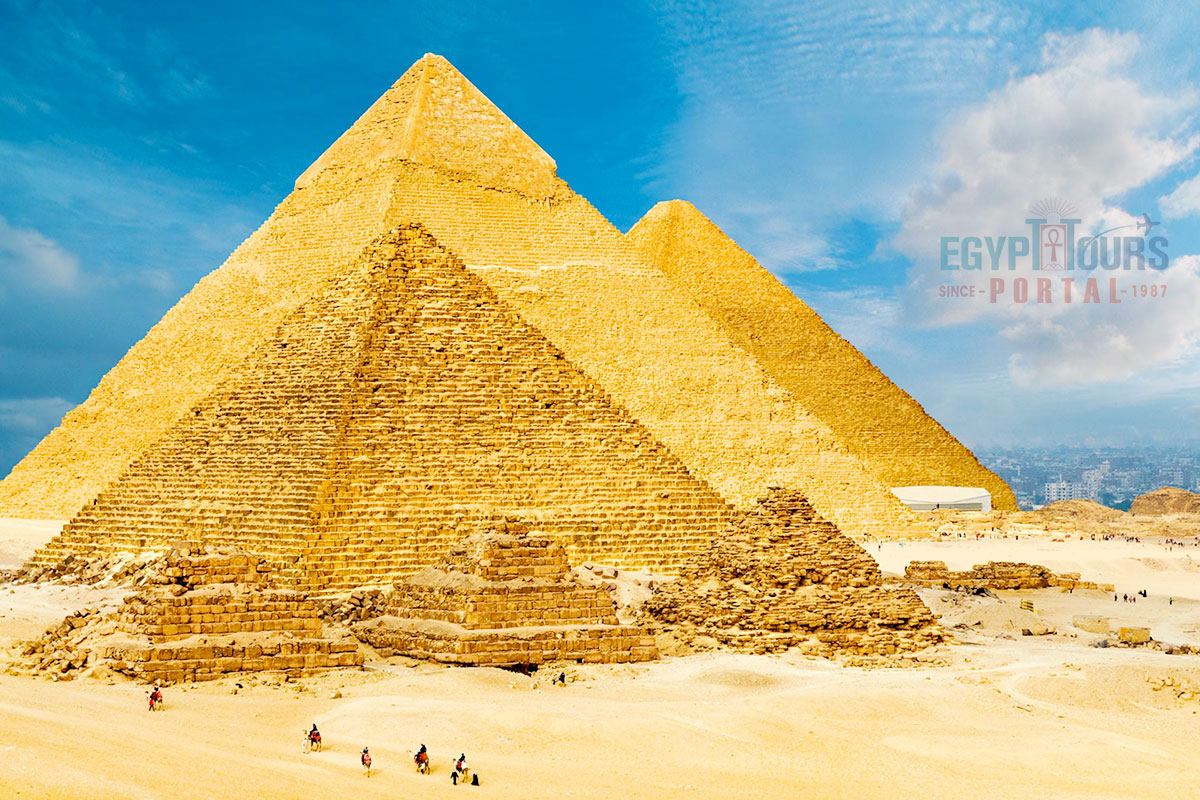
The Pyramid was built by Pharaoh Khufu in the Fourth Dynasty around 2560 BC during the old kingdom (2686-2181 BC) to be his final resting place; it is also known as the pyramid of “Cheops” by the Greeks who chronicled their visits millennia later and it is the first of three Pyramids built during Egypt old kingdom. The ancient ruins of the Memphis area, the Pyramids of Giza, Ṣaqqārah, Dahshūr, Abū Ruwaysh, and Abū Ṣīr, were collectively designated a UNESCO World Heritage site in 1979.
The Pharaohs of the 4th dynasty was known as the builders of the pyramids who were able to utilize their resources such as the stability of the government and the wealth through trade, the strong government, and high population to construct incredible & immortal construction, the first pharaoh to realize that was Sneferu, Khufu' father. Khufu started his plan to construct this pyramid after he came into power. He chose Giza to be the site of his necropolis as there were no other great monuments to compete for attention close by, plus Khufu's mother, Hetepheres I (2566 BCE), was buried there.
The process of dating the Great Pyramid of Khufu depended on many means that involved historical chronology, radiocarbon dating, which was able to accurately determine the history of Khufu, and the Great Pyramid, which is roughly between 2700 and 2500 BC. Many great historians document the Great Pyramid of Khufu, such as the ancient Greek historian Herodotus, one of the first major authors to give full details of the pyramid in the 5th century BC.
The ancient Greek historian Diodorus Siculus was able to visit Egypt between 60–56 BC and write a lot of details about the history, land, customs, and monuments of Egypt, including the Great Pyramid. The Greek geographer, historian, and philosopher visited Egypt in 25BC and stated that the pyramids were the burial place of kings. The Roman writer Pliny the Elder wrote about the Great Pyramid during the first century AD and attempted to understand how the pyramid was built. During the Greek and Coptic eras, many scholars and historians documented everything surrounding the Great Pyramid.
During the Islamic period in 820 AD, the Abbasid Caliph Al-Ma'mun (786–833) is said to have tunneled into the side of the structure and discovered the ascending passage and all of its connecting chambers. Many Islamic historians and scholars such ass Al-Maqrizi (1364–1442) Arab polymath Abd al-Latif al-Baghdadi (1163–1231) studied the pyramid in great detail to discover its secrets and wonders. During the Battle of the Pyramids on July 21, 1798, the military engagement of Napoleon Bonaparte and his French troops captured Cairo, and he entered the Great Pyramid of Khufu.
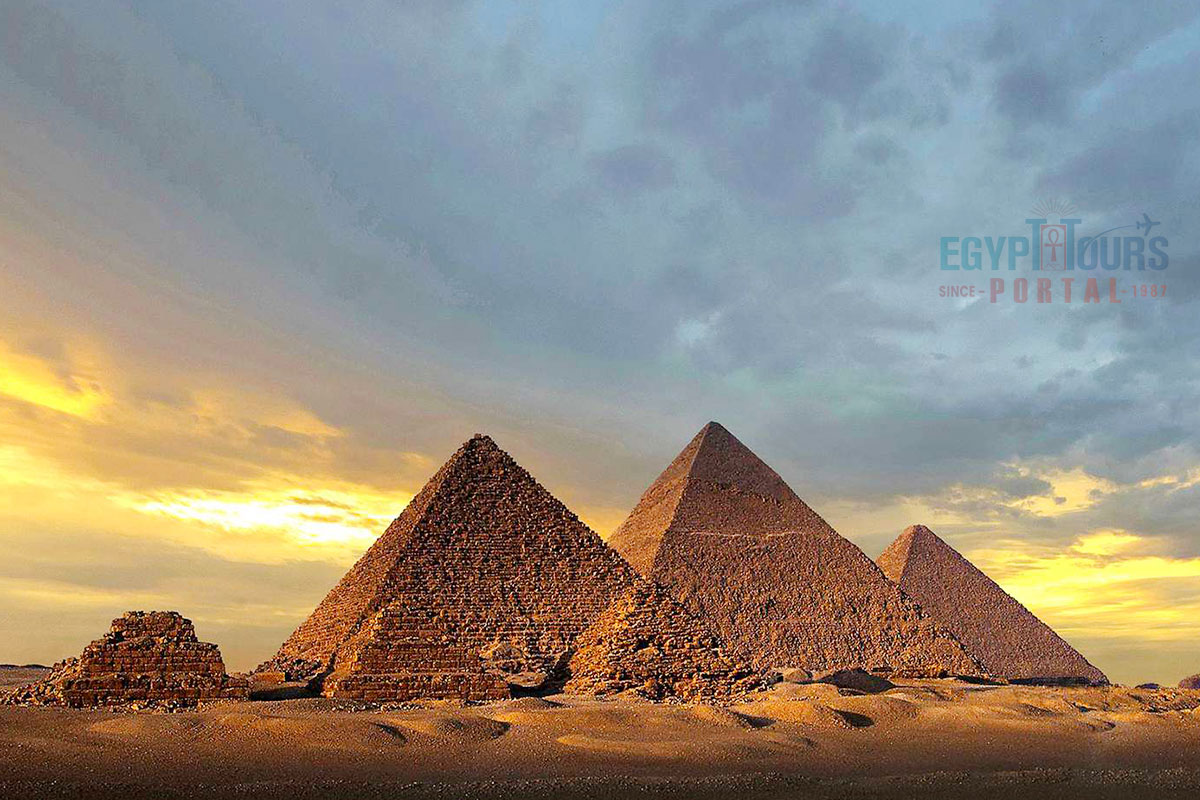
The pyramid of King Khufu is located within the famous Giza pyramid complex on the bank of the Nile River at the exact intersection of the longest line of latitude and longitude. The Great Pyramid of Giza has the Coordinates of 29°58′45″N 31°08′03″E. It is located south of the Great Pyramid, near Khafre’s valley temple, and is the Great Sphinx.
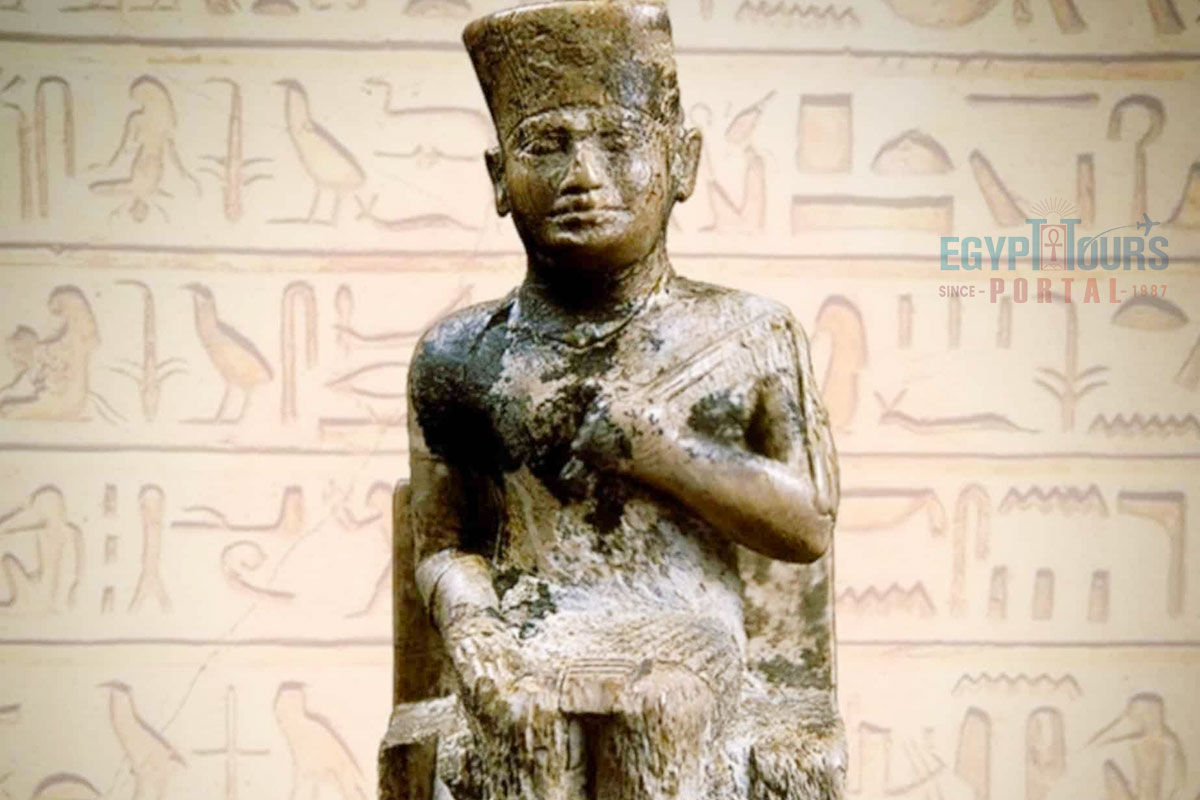
King Khufu (2589–2566 BC) was the second Pharaoh of the Fourth Dynasty of the Old Kingdom. His original name was Khnum-Khufu. Khufu succeeded his father Sneferu as a king, and he was crowned in the 26th Century B.C. The duration of his reign is uncertain, but according to ancient Egyptian and Greek historians, Khufu ruled for 50 or 63 years, but many modern scholars say he might have ruled between 23 to 46 years.
Khufu's name is immortalized in history due to his pyramid in the Giza necropolis. The only completely preserved statue of the pharaoh is a three-inch-high ivory figurine found in Abydos in 1903, which can be found in the Grand Egyptian Museum. The mummified body of King Cheops, or Khufu, has never been found, as it has been stolen from the Great Pyramid at some point in time.
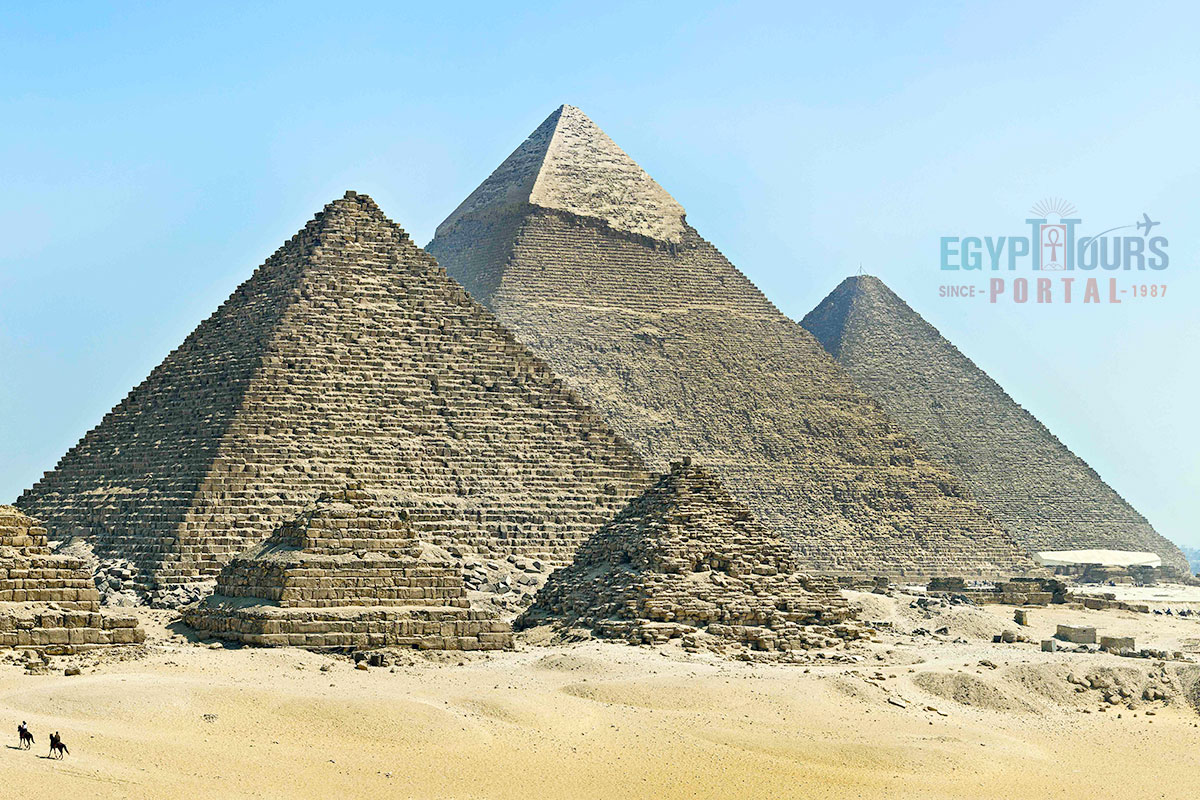
What makes the great pyramid an absolute wonder is the construction methods as some theories suggest it was built using slave labor but it was proven wrong as to reach this level of unmatched precision, you need to understand and utilize the dynamics of Management and a critical path analysis methods to control a workforce that peaked at roughly 100,000 skilled members on rotating shifts, the labor force was organized by a hierarchy and divided into teams.
About 5.5 million tonnes of limestone, 8,000 tonnes of granite, and 500,000 tonnes of mortar were used in the construction; White limestone from Tura for the casing and granite blocks from Aswan, weighing up to 80 tonnes, for the King's Chamber structure were used. The pyramid was covered in white limestone, giving it a smooth heavenly look, but it was removed over the centuries to build fortresses and mosques across Cairo. Once the Great Pyramid was finished, a special block made of a shining material like gold or electrum was placed on the top of the pyramid.
How the pyramids were built is a highly important and debated question, but many historians and scholars believe that the process involved encircling and sloping embankment of brick, sand, and earth was increased in height and in length as the pyramid rose. The limestone stone blocks were hauled up the ramp by means of rollers, sleds, and levers.
Discover the incredible architecture of the ancient Egyptian civilization
Read More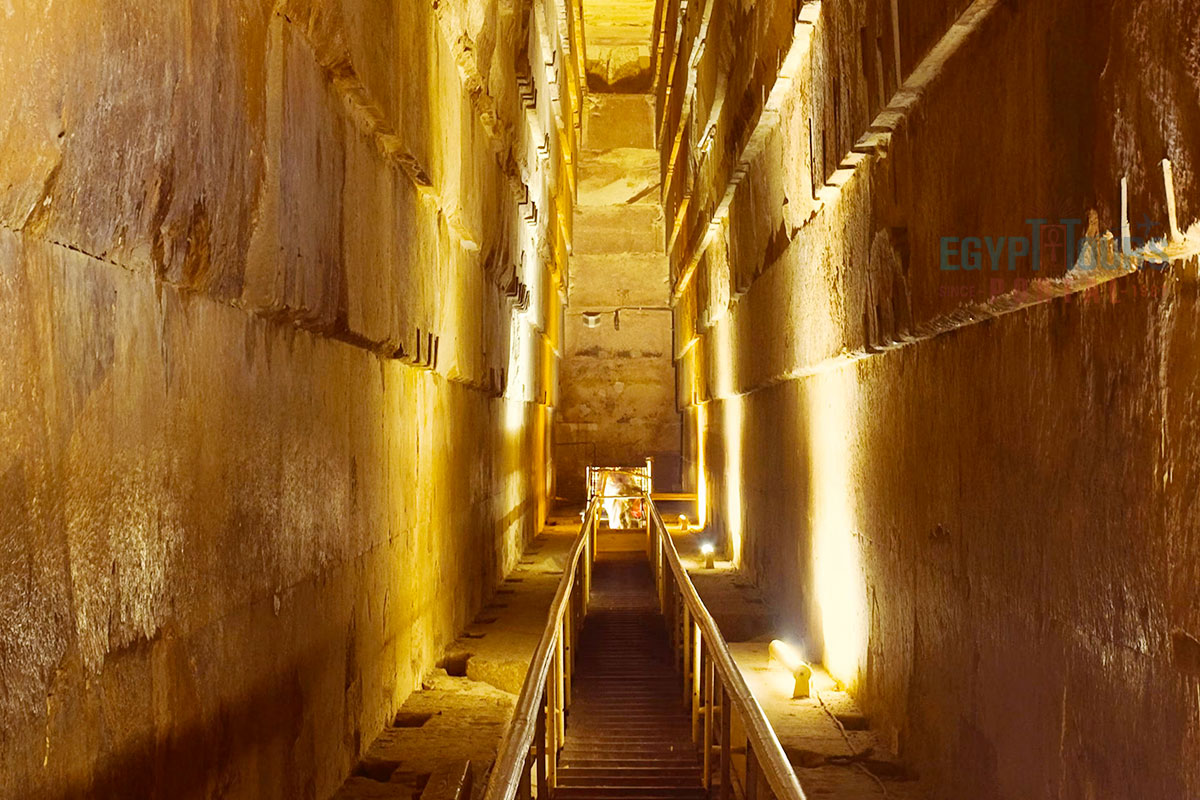
The interior of the Great Pyramid has been the subject of many fringe, unorthodox theories. It is comprised of the King’s burial chamber, Queen’s burial chamber, a mortuary temple which consists of two mortuary temples; one close to the pyramid and the other near the Nile connected by a causeway, plus it holds the tombs for Khufu's family and court, and a valley temple; all enclosed by a strong limestone wall plus the big void, smaller "satellite pyramid" and five buried solar barges.
There are three known chambers inside the pyramid; the first one is the king’s chamber, which is made entirely from granite, and the only object in the chamber is a rectangular granite sarcophagus. On top of the chamber are the five rooms called relieving chambers, and between them is a limestone beam.
The king’s sarcophagus is carved from a single, hollowed-out granite, measures about 198 cm (6.50 ft) by 68 cm (2.23 feet), the external 228 cm (7.48 ft) by 98 cm (3.22 ft), with a height of 105 cm (3.44 ft), and a thickness of about 15 cm (0.49 ft) plus it sits empty at the exact central axis of the great pyramid. The burial chamber was sealed with a series of massive granite blocks, and the entrance to the shaft was filled with limestone to obscure the opening.
There is an unfinished subterranean chamber whose function is an enigma, plus several so-called ‘air shafts’ that radiate out from the upper chambers. The goal of these relieving chambers was to absorb the enormous pressure on the King’s great chamber and to redirect it into the surrounding stones.
Above the floor are two narrow shafts in the north and south walls, which appear to be aligned with the stars or certain areas of the northern and southern skies, as these shafts helped in ascending the king’s spirit to the heavens.
The grand gallery is an ideal example of stonemasonry, it is 8.6 meters (28 ft) high and 46.68 meters (153.1 ft) long, and holds a corbelled vault at an angle about 26 degrees that peaked just short of 30 with corbelled arch stacks stones on each successive layer with a slight overhang until the structure meets at the high point which makes the grand gallery a little more impressive.
The Queen's chamber, where the wife of the pharaoh was kept, has the same design as the king's chamber, with some design differences. The third one is the Grand Gallery, a passage providing access to the royal burial chambers, it is 8.6 m (28 ft) high, 64.68 m (153.1 ft) long and the walls of the gallery are lined with massive granite blocks baring no carvings, no murals, no artifacts or decorations of any kind.
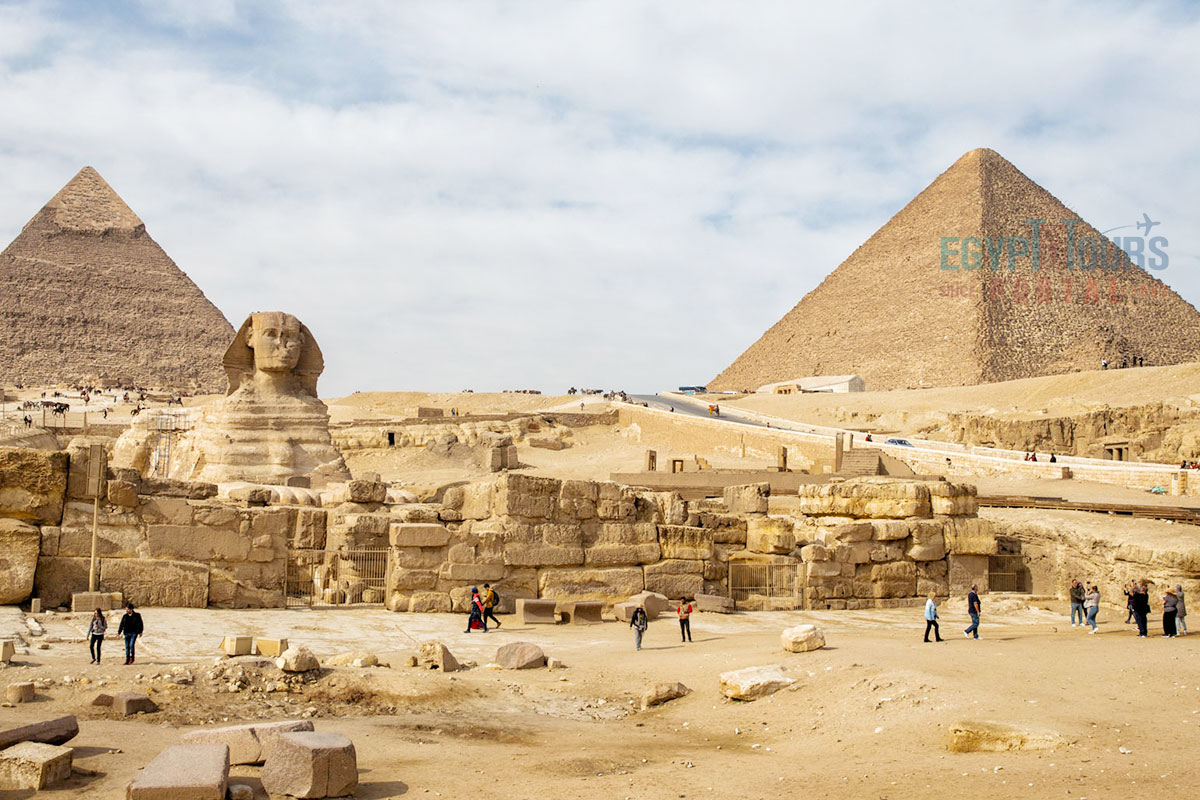
The Pyramid's temple was built on the eastern side of the Giza pyramid complex. It measures 52.2 meters (171 ft) north to south and 40 meters (130 ft) east to west. It consists of a big courtyard of rectangular shape, which is coated with black basalt.
The temple complex has almost entirely disappeared with the passing of time. The mortuary temple leads to the King’s burial chamber, which remains in the best condition in this pyramid. The three smaller pyramids are in much better condition, which were constructed to preserve the memories of Khufu’s mother Hetepheres I, his wives Meritites I and Henutsen.
On the southern side of the pyramid, Khufu is two huge, rectangular stone-lined pits that contained completely disassembled boats. One of which was removed and reconstructed. It is known as the solar boat of Khufu, which can be found at the Grand Egyptian Museum. This solar boat measures 43.3 meters (142 feet) in length and was constructed of 1,224 separate pieces stitched together with ropes.
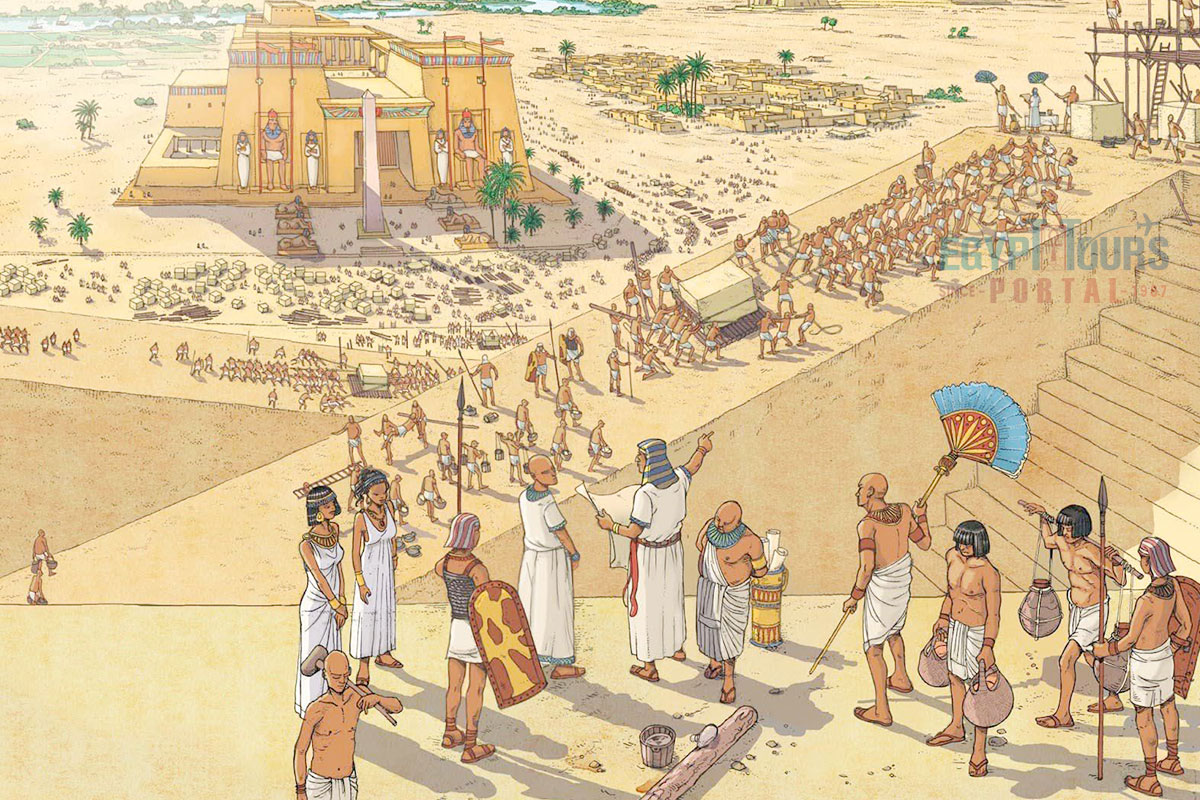
How the Pyramids were built remains one of the most fascinating questions and achievements in human history. It was built during the Fourth Dynasty of the Old Kingdom around 2580–2560 BCE, which was created for the Pharaoh Khufu and stands as a testament to ancient Egyptian ingenuity, planning, and engineering.
Ancient Egyptians used advanced techniques and carefully coordinated teams. The construction process began with a thorough survey of the area to ensure the pyramid's base was level. A stable foundation was essential, and workers leveled the ground by flooding it with water, marking high points, and chiseling them down to create a perfectly flat surface. After establishing the base, stones were transported, some from quarries as far as Aswan, about 800 kilometers away.
The pyramid’s estimated 2.3 million stone blocks, each weighing between 2.5 to 15 tons, were likely moved using sledges and a system of lubricated paths or tracks, and then lifted through ramps. Archaeologists believe three types of ramps were used: straight, zigzagging, and spiral. These ramps enabled workers to lift the massive stones layer by layer, achieving the Great Pyramid’s final height of approximately 146.6 meters (481 feet).
Also, water passways were used to transport the stone blocks across the plateau, plus the Nile boats transported all the heavy rocks from southern Egypt across Luxor and Aswan. Up to 400,000 Workers organized in skilled labor teams meticulously cut and placed the stones. Each layer was carefully aligned, and workers likely used plumb bobs, levels, and sighting rods to ensure precision.
When completed, the Great Pyramid was encased in gleaming white Tura limestone, which would have reflected sunlight and made the structure visible from afar, a dazzling symbol of royal power and divine connection. Over time, many fringe theories were attached to the construction of the pyramid, which involved aliens, Atlantis, giants, magical power, and many crazy talk.
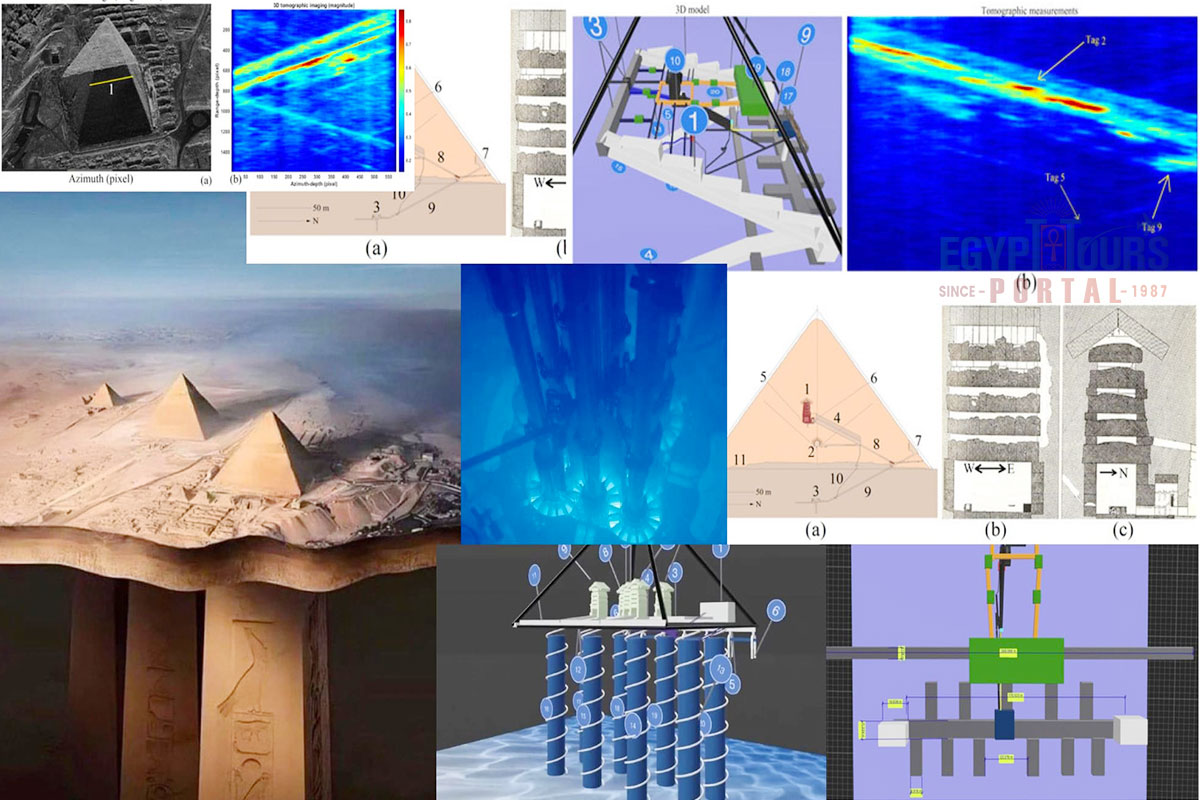
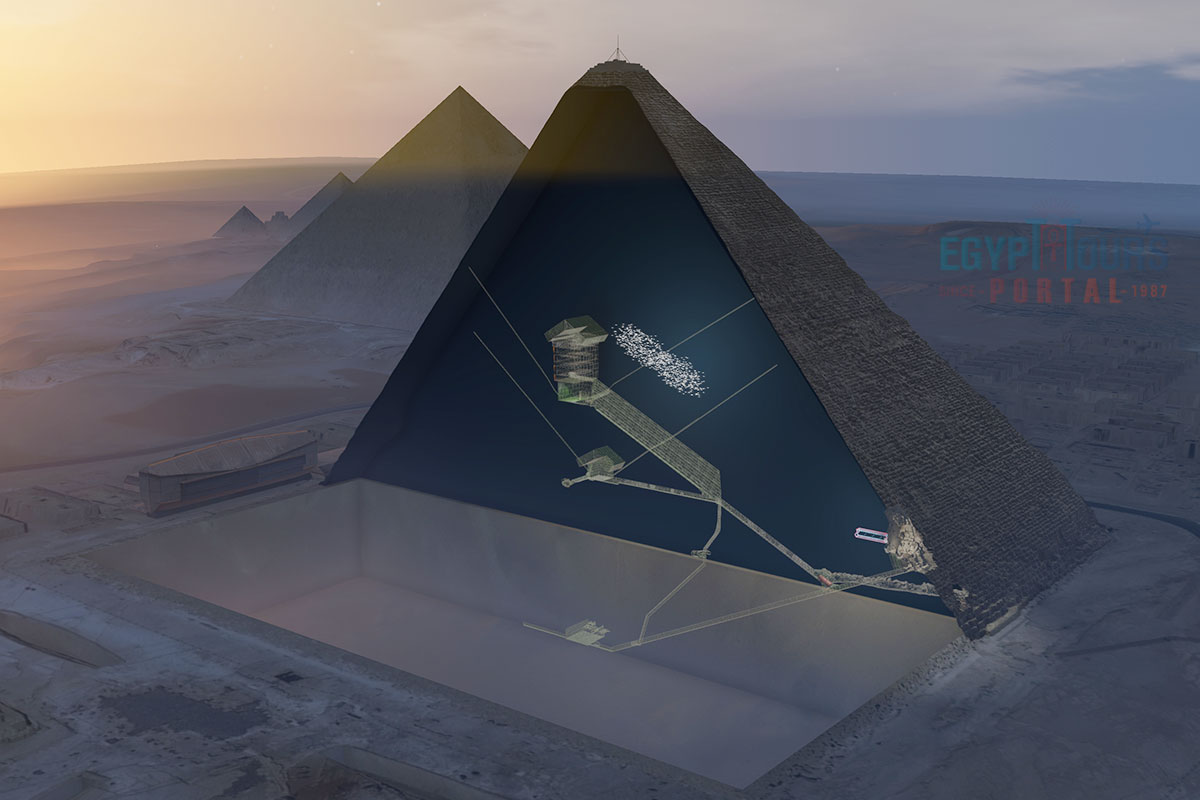
Ancient Egyptian history is a collection of wonderful and mythical stories, so you can witness the Great Pyramid of Giza through our Cairo day tours if you are in Cairo, or check our Egypt tours which mixed by Nile river cruise to enjoy a perfect holiday in the land of Pharaohs and its beautiful cities Cairo, Alexandria, Luxor, Aswan, Hurghada and much more.
Private 4 Days Cairo Tour Packages for UAE Travelers 4 days Cairo Egypt Tour package...
Tour Location: Cairo – Giza...
5 Days Cairo and Alexandria Tour Package For UAE Travelers 5 days Cairo and Alexandr...
Tour Location: Cairo/Giza/Alexandria...
6 Days Cairo, Luxor & Aswan Tour Package For UAE Travelers 6 days Cairo, Luxor &...
Tour Location: Cairo/Giza/Aswan/Luxor...
Amazing 7 Days Cairo and Hurghada Holiday for UAE Travelers 7 Days Cairo & Hurgh...
Tour Location: Cairo – Giza – Hurgh...
The Great Pyramid of Giza still stands today, albeit in a weathered and slightly diminished form. Time, weather, and human activity have taken their toll on the structure. The Tura limestone casing that once covered the entire pyramid was stripped away over centuries, mainly during the medieval period, to be repurposed for construction projects in Cairo. Despite these changes, the pyramid remains a remarkable testament to ancient Egyptian architecture, attracting millions of visitors every year.
The estimated weight of the Great Pyramid is a staggering 5.75 million tons. This massive weight is due to the sheer volume of stone blocks used in its construction, around 2.3 million, each weighing an average of 2.5 tons. The heaviest stones, used in the King's Chamber, weigh up to 80 tons each and were transported from Aswan, about 800 kilometers away. The immense weight and solid construction have contributed to the pyramid’s durability over the millennia.
The original capstone, or "pyramidion," of the Great Pyramid is missing, and its fate remains a mystery. Ancient texts suggest it may have been made of a precious material like gold or electrum, a gold-silver alloy, to reflect the sun's rays and symbolize the divine. Over time, it was likely lost, looted, or eroded, and no definitive evidence of its material or appearance has been found. Today, the top of the pyramid is flat, with the final few meters of stone missing, giving it a slightly truncated appearance.
The Great Pyramid was constructed as a tomb for Pharaoh Khufu, intended to secure his transition to the afterlife and demonstrate his power and divine connection. Ancient Egyptians believed that a pharaoh was a god on earth, and his burial place was not just a resting place but a gateway to the divine.
The pyramid was designed to align with specific stars, aiding Khufu’s soul in reaching the afterlife. Additionally, the sheer scale and precision of the pyramid emphasized the central role of the pharaoh in maintaining cosmic order, or "ma’at," an essential concept in Egyptian religion and governance.
The Great Pyramid of Giza remains one of the most visited monuments in the world, drawing millions of tourists annually. According to recent estimates, around 14 million people visit the Giza Plateau each year, with the Great Pyramid being the main attraction. Tourism peaks between October and April due to the delightful climate, with visitors coming to marvel at the pyramid's scale, learn about ancient Egyptian civilization, and explore the mysteries of one of humanity’s greatest achievements.
The entire country of Egypt deserve to be explored with its every heavenly detail but there are places that must be seen before any other such as the breathtaking Hurghada's red sea, The wonders of Cairo the pyramids of Giza, the great sphinx, the Egyptian Museum, Khan El Khalili Bazaar, the wonders of Luxor like Valley of the Kings, Karnak & Hatshepsut temple and the wonders of Aswan such as Abu Simbel temples, Philea temple, Unfinished obelisk and The Wonders of Alexandria like Qaitbat Citadel, Pompey's Pillar and Alexandria Library. Read more about the best places to visit in Egypt.
If you want to apply for a Visa On Arrival that lasts for 30 days then you should be one of the eligible countries, have a valid passport with at least 6 months remaining and pay 25$ USD in cash, as for the E-Visa for 30 day you should have a valid passport for at least 8 months, complete the online application, pay the e-visa fee then print the e-visa to later be presented to the airport border guard. You could also be one of the lucky ones who can obtain a free visa for 90 days. Read more about Egypt travel visa.
Egypt has a variety of delicious cuisines but we recommend “Ful & Ta’meya (Fava Beans and Falafel)”, Mulukhiya, “Koshary”, a traditional Egyptian pasta dish, and Kebab & Kofta, the Egyptian traditional meat dish.
The best time to travel to Egypt is during the winter from September to April as the climate becomes a little tropical accompanied by a magical atmosphere of warm weather with a winter breeze. You will be notified in the week of your trip if the Climate is unsafe and if any changes have been made.
You should pack everything you could ever need in a small bag so you could move easily between your destinations.
We have been creating the finest vacations for more than 20 years around the most majestic destinations in Egypt. Our staff consists of the best operators, guides and drivers who dedicate all of their time & effort to make you have the perfect vacation. All of our tours are customized by Travel, Financial & Time consultants to fit your every possible need during your vacation. It doesn't go without saying that your safety and comfort are our main priority and all of our resources will be directed to provide the finest atmosphere until you return home.
You will feel safe in Egypt as the current atmosphere of the country is quite peaceful after the government took powerful measures like restructuring the entire tourist police to include all the important and tourist attractions in Egypt. Read more about is it safe to travel to Egypt.
Wear whatever feels right and comfortable. It is advised to wear something light and comfortable footwear like a closed-toe shoe to sustain the terrain of Egypt. Put on sun block during your time in Egypt in the summer to protect yourself from the sun.
The best activity is by far boarding a Nile Cruise between Luxor and Aswan or Vise Versa. Witness the beauty of Egypt from a hot balloon or a plane and try all the delicious Egyptian cuisines and drinks plus shopping in old Cairo. Explore the allure and wonders of the red sea in the magical city resorts of Egypt like Hurghada and many more by diving and snorkeling in the marine life or Hurghada. Behold the mesmerizing western desert by a safari trip under the heavenly Egyptian skies.
There are a lot of public holidays in Egypt too many to count either religious or nation, the most important festivals are the holy month of Ramadan which ends with Eid Al Fitr, Christmas and new years eve. Read more about festivals & publich holidays in Egypt.
Egypt is considered to be one of the most liberal Islamic countries but it has become a little bit conservative in the last couple of decades so it is advised to avoid showing your chest, shoulders or legs below the knees.
Arabic is the official language and Most Egyptians, who live in the cities, speak or understand English or at least some English words or phrases. Fewer Egyptians can speak French, Italian, Spanish, and German. Professional tour guides, who work in the tourism sector, are equipped to handle visitors who cannot speak Arabic and they will speak enough English and other languages to fulfill the needs of all our clients.
The fastest way is a car, of course, a taxi. If you are in Cairo ride a white taxi to move faster or you could board the fastest way of transportation in Egypt metro if the roads are in rush hour.
The temperature in Egypt ranges from 37c to 14 c. Summer in Egypt is somehow hot but sometimes it becomes cold at night and winter is cool and mild. The average of low temperatures vary from 9.5 °C in the wintertime to 23 °C in the summertime and the average high temperatures vary from 17 °C in the wintertime to 32 °C in the summertime. The temperature is moderate all along the coasts.
It is the home of everything a traveler might be looking for from amazing historical sites dating to more than 4000 years to enchanting city resorts & beaches. You will live the vacation you deserve as Egypt has everything you could possibly imagine.









